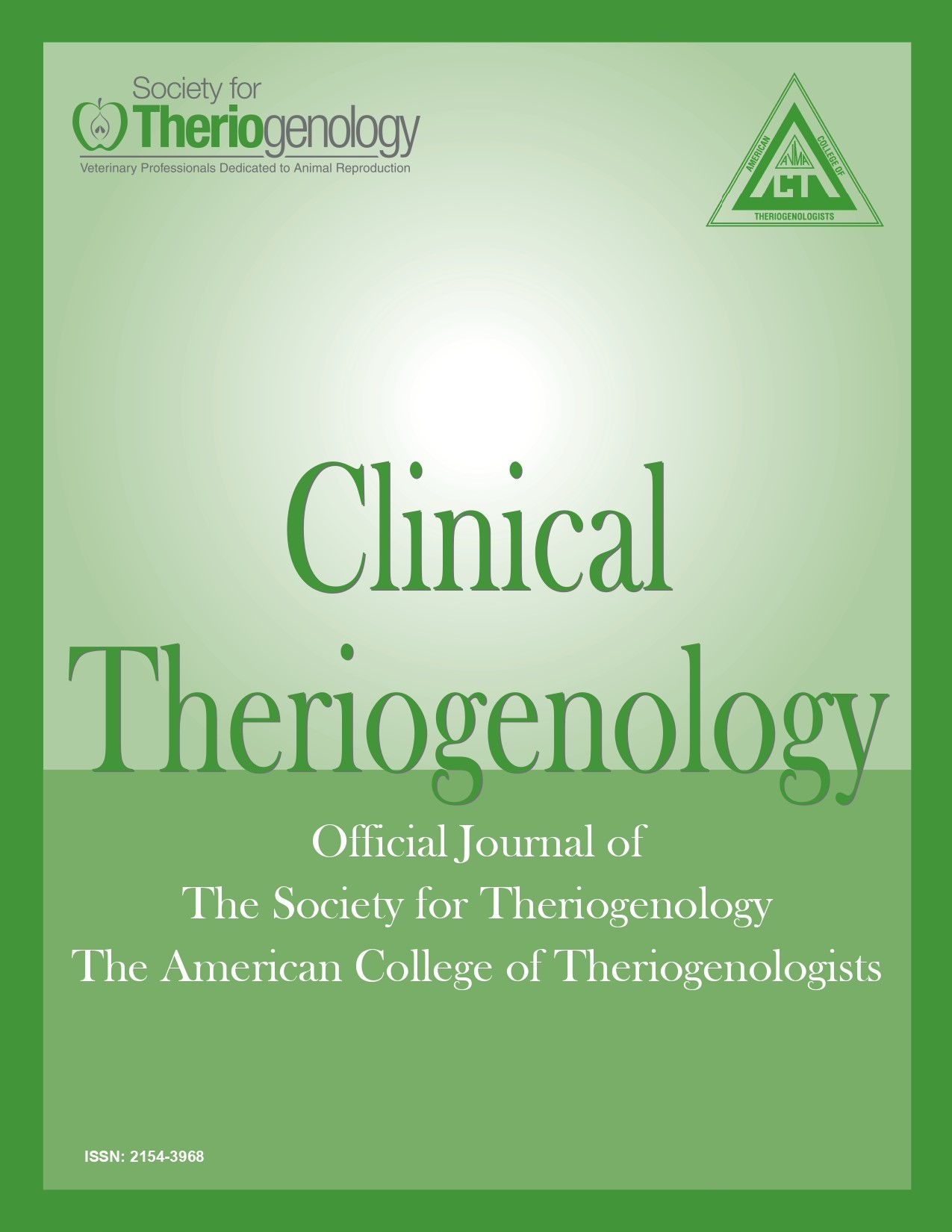Congenital hydrocephalus in a stillborn Haflinger foal
Abstract
A 14-year, multiparous Haflinger mare, apparently fullterm (unknown breeding or ovulation date), was presented for dystocia. Mare was transvaginally palpated at the farm by the referring veterinarian; foal was in craniolongitudinal presentation, dorsosacral position with extended forelimbs in the vaginal vault and head just cranial to cervix, and a cranial abnormality of the foal prevented assisted vaginal delivery. Mare was referred. Foal was not alive at presentation and was undeliverable with assistance because of congenital hydrocephalus. Anesthetized mare was placed in Trendelenburg position, controlled vaginal delivery was elected and foal was removed via fetotomy. Mare was negative for β1, 3- N-acetylgalactosaminyltransferase 2 (B3GALNT2) nonsense mutation (reported to be responsible for hydrocephalus). Dystocia in a Haflinger mare because of hydrocephalus is reported for the first time.
Downloads
References
2. Ducro BJ, Schurink A, Bastiaansen JW, et al: A nonsense mutation in B3GALNT2 is concordant with hydrocephalus in Friesian horses. BMC Genomics 2015;16:761. doi: 10.1186/s12864-015-1936-z
3. Hodder ADJ, Ball BA: Theriogenology question of the month. J Am Vet Med Assoc 2008;232:211–213. doi: 10.2460/javma.232.2.211
4. Kolb DS, Klein C: Congenital hydrocephalus in a Belgian draft horse associated with a nonsense mutation in B3GALNT2. Can Vet J 2019;60:197–198.
5. Ojala M, Ala-Huikku J: Inheritance of hydrocephalus in horses. Equine Vet J 1992;24:140–143. doi: 10.1111/j.2042-3306.1992.tb02799.x
6. Schmidt M, Ondreka N: Hydrocephalus in animals. Pediatric Hydrocephalus 2019;53–95. doi: 10.1007/978-3-319-27250-4_36
7. Haverkamp F, Wölfle J, Aretz M, et al: Congenital hydrocephalus internus and aqueduct stenosis: aetiology and implications for genetic counselling. Eur J Pediatr 1999;158:474–478. doi: 10.1007/s004310051123
8. Jones HC, Bucknall RM: Inherited prenatal hydrocephalus in the H-Tx rat: a morphological study. Neuropathol Appl Neurobiol 1988;14:263–274. doi: 10.1111/j.1365-2990.1988.tb00887.x
9. Edwards L, Finno CJ: Genetics of equine neurologic disease. Vet Clin North Am Equine Pract 2020;36:255–272. doi: 10.1016/j.cveq.2020.03.006
10. Waelchli RO, Ehrensperger F: Two related cases of cerebellar abnormality in equine fetuses associated with hydrops of fetal membranes. Vet Rec 1988;123:513–514. doi: 10.1136/vr.123.20.513

This work is licensed under a Creative Commons Attribution-NonCommercial 4.0 International License.
Authors retain copyright of their work, with first publication rights granted to Clinical Theriogenology. Read more about copyright and licensing here.





